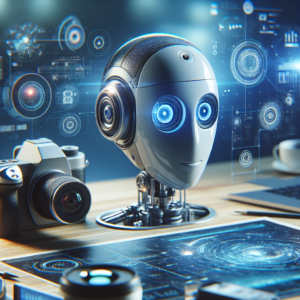Have you ever wondered how automation is transforming the way we work? Every day, I see new technologies emerging that change not just how businesses operate, but also how we, as individuals, engage in our daily tasks. It’s fascinating to think about how this shift is reshaping the workforce and what it means for our future.
Understanding Automation
At its core, automation refers to the use of technology to perform tasks with minimal human intervention. I find it interesting that this concept isn’t new; it dates back to industrial times when machines were first used to replace manual labor in factories. However, the pace at which automation is evolving today is unprecedented, and it is making a significant impact on various sectors.
Types of Automation
When I think about automation, I realize there are different types that affect our lives in various ways:
- Fixed or Automation: This type focuses on specific tasks and is not flexible. It’s often used in manufacturing where machines perform repetitive actions.
- Programmable Automation: Here, machines can be configured for different tasks based on programming. It’s often used in batch production processes.
- Flexible Automation: This allows for the adjustment of tasks and is commonly seen in industries that require quick changes or customization.
Each type plays a unique role in how businesses operate and how jobs are affected.
Impact of Automation on Employment
As automation becomes more prevalent, I find myself contemplating its effects on employment. It’s no secret that automation can lead to job displacement, especially in areas where tasks are routine and easily programmable. Yet, it’s also essential to recognize that automation can create new opportunities.
Job Displacement
The fear of job loss due to automation is real. According to various studies, tasks performed by machines are sometimes more efficient and error-free than those done by people. A striking example can be seen in the manufacturing sector, where robots have taken over assembly lines. This has led to a decrease in demand for certain low-skilled jobs.
| Sector | Jobs Affected | Reason |
|---|---|---|
| Manufacturing | Assembly line operators | Robots performing repetitive tasks |
| Retail | Cashiers | Self-checkout systems |
| Agricultural | Field workers | Harvesting machines |
This table clearly illustrates how specific sectors are feeling the pressure of automation.
Creation of New Jobs
On the flip side, it’s crucial to acknowledge that while some jobs disappear, others emerge. I find it fascinating that, as machines take over mundane tasks, new roles in areas like tech support, programming, and maintenance of automation systems are on the rise. The job market is evolving, and those of us willing to adapt can find new opportunities.
Skill Shift in the Workforce
With the rise of automation, the skills that employers are looking for are changing dramatically. I notice that there’s a greater emphasis on technical skills and emotional intelligence now than ever before.
Demand for Technical Skills
Moving forward, technical skills are becoming increasingly vital. Knowledge of software, programming languages, and systems management can set me apart in the job market. Additionally, understanding how automated systems work can be a significant advantage.
Importance of Soft Skills
While technical skills are essential, soft skills are equally important. I find that interpersonal skills, creativity, and problem-solving abilities are becoming the differentiators in a job market dominated by automation. Being able to work collaboratively and adapt to changes will be crucial.
| Skill Type | Examples | Importance |
|---|---|---|
| Technical Skills | Programming, Data Analysis | Necessary for operating systems |
| Soft Skills | Communication, Creativity | Help in team dynamics and innovation |
This table highlights both required skill types and what roles they play in the future workforce.
Automation and Economic Growth
The relationship between automation and economic growth is a topic I often ponder. While automation can drive efficiency and productivity, it also brings challenges that we need to address.
Increased Productivity
One of the most significant benefits of automation is the boost in productivity. Machines can work continuously, and they can do so without experiencing fatigue. This increased efficiency means businesses can produce more goods at a lower cost, leading to higher profits.
Economic Disparity
However, as I think about the economic implications, I can’t ignore the potential for increased disparity. Companies that successfully implement automation may outperform their competitors, leading to monopolistic practices. This could widen the gap between large corporations and small businesses, raising ethical questions about how we manage economic growth.
The Future of Work in an Automated Environment
As we venture further into an automated future, I find it essential to consider how this will affect our everyday work life. The transformation of traditional workplaces is already underway, but what could the future hold?
Rise of Remote Work
I’ve seen that automation can facilitate remote work. With advanced communication tools and cloud-based applications, teams can collaborate seamlessly regardless of physical location. The pandemic accelerated this trend, and I believe it’s a shift that’s here to stay, as it offers flexibility and accessibility.
Focus on Innovation
In an automated world, I think innovation will be at the forefront. Companies will have more time to focus on creative and strategic initiatives. This could lead to exciting advancements and new products that we can’t even imagine yet!
Balancing Automation and Human Involvement
I believe finding the right balance between automation and human involvement is essential. It’s not just about replacing people with machines; it’s about enhancing our capabilities and making our jobs more fulfilling.
Human-Machine Collaboration
A concept I find intriguing is human-machine collaboration. Instead of viewing machines as competitors, we can see them as partners. By automating repetitive tasks, we free up time for more strategic work that requires human insight and creativity.
Ethical Considerations
As we embrace automation, we must also consider the ethical implications. Questions about job security, privacy, and decision-making in AI systems arise. It’s crucial that we establish guidelines and regulations to ensure that technology benefits everyone, not just a select few.
| Aspect | Considerations | Impact |
|---|---|---|
| Job Security | Future of employment | Need for continuous learning |
| Privacy | Data usage | Protecting personal information |
| Decision-making | AI influence | Maintaining human oversight |
This table illustrates some of the critical ethical considerations surrounding automation.
Conclusion
As I reflect on how automation is changing the workforce, it’s clear that we are on the brink of a significant transformation. While there are challenges ahead, I see great potential for innovation, productivity, and new opportunities. Having an open mind and a willingness to adapt will be crucial for anyone navigating this new landscape.
The future isn’t just about machines taking over; it’s about how we can harness technology to enhance our work lives and improve the world around us. In embracing automation, I believe we can create a workforce that is not just more efficient, but also more fulfilled.
Final Thoughts
Automation is here to stay, and its impact on the workforce is profound. I encourage you to stay curious and keep learning about these changes. By doing so, I believe we can thrive in this new era of work and harness the best aspects of both human creativity and machine efficiency. Let’s embrace the future together!






